How do hurricanes impact forest ecosystems?
The island of Puerto Rico has diverse landscapes, making it a natural laboratory for ecologists. From mountain rainforests to coastal coral reefs, it contains a range of ecosystems that are teeming with life. The Luquillo Long Term Ecological Research Program and Luquillo Experimental Forest are based at El Verde Field Station in El Yunque National Forest. Here, ecologists are studying how and why forest ecosystems are changing, including how they respond to hurricanes and droughts.
Talk like an ecologist
Biodiversity — the range of organisms in an ecosystem
Canopy — the uppermost portion of a forest
Ecosystem — the living and non-living components of an environment and the interactions between them
Forest morphology — the physical characteristics of a forest, including the size of trees and the shape of the underlying landscape
Hurricane — an extreme tropical storm characterised by strong winds and intense rainfall. The most severe hurricanes, classified as Category 5, have winds of over 253 km/hr (157 miles/hr)
Leeward — the side sheltered from the wind
Pesticide — a chemical used to kill pests
Prevailing wind — the usual wind direction
Resilience — the ability of an ecosystem to recover after a disturbance
Dense green forests cover the mountains that rise from the sparkling blue waters of the Caribbean, surrounded by white sand beaches and interspersed with vibrant towns. This is Puerto Rico, also known as Isla del Encanto, and it is easy to see how it came by this name. With lush rainforests, dark mangrove swamps and colourful coral reefs, the island is an ecologist’s paradise. “Puerto Rico has a huge range of different ecosystems and incredible biodiversity,” says Omar Gutiérrez del Arroyo Santiago. “It is a unique place to study.”
A natural laboratory for ecology research
In the northeast of Puerto Rico, on the slopes of the Luquillo Mountains, lies El Yunque National Forest. This mountainous rainforest is the site of the Luquillo Long Term Ecological Research Program. Here, scientists study how the forest ecosystem responds to natural disturbances (such as hurricanes and droughts), legacies of human interference (such as deforestation and dams) and climate change. Ecologists at Luquillo investigate all aspects of the changing ecosystem, from how droughts and hurricanes influence soils and vegetation, to how land use influences animal populations.
How do hurricanes impact soils?
Omar designed a research project to study the effects of drought on greenhouse gases and the abundance of nutrients in soils. “I installed sensors in experimental plots throughout the forest which continuously collected soil data, such as temperature, moisture content and pH, for three years,” he explains. “Every few weeks, I visited the plots to collect soil and air samples which were analysed in the laboratory to determine their chemical composition.”
While Omar had hoped to document how the soils in El Yunque responded to drought, Luquillo is a natural laboratory and conditions cannot be controlled. In September 2017, part way through Omar’s research project, Hurricane Maria hit the island. This deadly storm devastated Puerto Rico, causing over $90 billion of damage and costing almost 3,000 lives. This tragic situation meant Omar had an opportunity to re-frame the focus of his research.
“My sensors captured continuous data throughout the hurricane,” Omar explains. “From a scientific perspective, it was very rare to have such detailed soil data before, during and after a hurricane.” Thanks to his soil sampling campaign, Omar discovered that after Hurricane Maria there was a significant increase in soil nitrogen and iron. “Changes in nutrient concentrations impact all the organisms in the soil,” he explains. “For example, nitrogen is a key nutrient for plant growth, and the increase in nitrogen in the soil after Hurricane Maria likely promoted plant growth and enabled the vegetation to rapidly respond to the open canopy.” Within a couple of years, soil chemistry had returned to pre-hurricane levels and vegetation was regrowing. The forest soil had recovered its function.
How do hurricanes impact trees?
Alyssa Brown is investigating how resilient the El Yunque forest is to hurricanes. “Resilience is a combination of resistance (how much damage the ecosystem receives during a disturbance) and response (the ecosystem’s reaction to the disturbance),” she explains.
In September 1989, Hurricane Hugo hit Puerto Rico. While it was of similar strength to Hurricane Maria (both were Category 5 hurricanes), Hurricane Hugo did significantly less damage to forests on the island. “Hurricane Hugo hit Puerto Rico in the same direction as the prevailing wind, while Hurricane Maria hit in the opposite direction,” says Alyssa. “I want to know if this explains why many more trees were snapped by Hurricane Maria.” If a tree is usually impacted by wind from one direction, Alyssa suspects that it will develop resistance to forces from that direction. This could mean that trees are better able to withstand hurricanes that blow in the same direction as the prevailing wind.
To test her hypothesis, Alyssa is collecting cores from the windward and leeward sides of trees growing in El Yunque. By drilling into the tree, she extracts a thin, pencil-like rod of wood. Back in the laboratory, she will examine the tree rings in the cores under a microscope to see if there is a difference in the cells on each side of the tree.
Professor Alex Sloan has investigated how trees with different life-history characteristics respond to stem breakage. In an experimental plot in the forest, he deliberately snapped trees’ trunks and monitored how the trees recovered. “Many fast-growing species died due to this damage, indicating they have low resilience to damage while growing in the shade of canopy trees,” he explains. “However, slow-growing trees were able to rebranch and regrow. This suggests these species are more likely to survive after they have been damaged by falling branches or high winds during hurricanes.”
How do hurricanes impact shrimp?
Hurricanes do not only impact the forest’s vegetation. They also influence the wider forest landscape, as well as the animals that call El Yunque home. Dr Stefani Cruz Rosa started her research at Luquillo shortly after Hurricane Maria, when the forest was still recovering. “Hurricanes change the forest morphology,” she explains. In addition to the extreme winds snapping branches and blowing trees down, the extreme rainfall causes streams to change course. “This forest is a dynamic and constantly changing environment,” says Stefani. “I wanted to understand how organisms adapt to these natural changes.” Stefani examined how shrimp were impacted by changing watercourses. She measured water flow rates in different streams and pools and collected shrimp from each location. “Some pools dried up completely when streams changed course, but some shrimp survived by moving to new ones,” she says.
What else impacts shrimp populations?
Marla Valeria Santos-Crespo studies shrimp populations in rivers throughout Puerto Rico. “I’m interested in how land use surrounding rivers influences water quality, and how this affects shrimp populations,” she explains. “I collect and analyse water samples and shrimp from rivers that are surrounded by different environments, and so are impacted by different activities.” For example, the water in the Río Sabana is relatively clean as it flows through the protected El Yunque forest, and it contains a healthy shrimp population. Río Piedras is polluted as it flows through the town of San Juan, and very few shrimp live in it. And Río Coamo is contaminated by pesticides as it flows through agricultural land.
“Shrimp are an important indicator of ecosystem health,” explains Stefani. “If shrimp are missing, the ecosystem is not in balance.” Marla is also investigating how the water quality impacts the shrimp themselves. She places shrimp in tanks containing different concentrations of pollutants and observes how this influences their behaviour, such as how they move and interact with other shrimp.
What else can we learn from El Yunque?
“I’m interested in how communities of species change after disturbances,” says Professor Jesús Gómez. To study this, he evaluated how food webs among organisms living in the Luquillo Mountains were affected by Hurricane Maria. Jesús also conducted experiments to artificially lower the water level in streams to simulate the conditions of drought, then monitored how species responded. “I’m intrigued by how ecosystems adapt to climate change,” he continues. “Long-term ecological research projects, such as those at Luquillo, allow us to observe how ecosystems have changed in the past, which helps us understand how they might change in the future.”
As climate change continues, extreme weather events, such as hurricanes and droughts, will become more common and more severe. Ecologists, such as those who work in the Luquillo Long Term Ecological Research Program, are vital for helping us to understand how ecosystems will respond.
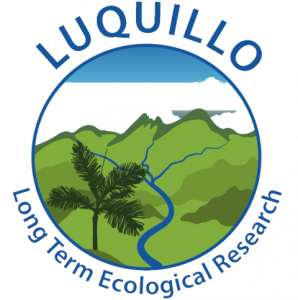 Luquillo Long Term Ecological Research Program
Luquillo Long Term Ecological Research Program
El Yunque National Forest, Puerto Rico
Field of research: Ecology
Research project: Investigating how forests respond to disturbances, such as hurricanes and droughts
Funders: The Data Jam project and the scientific mentors have been supported in part by US National Science Foundation (NSF) grants: DRL-2049061 (The Learning Partnership); BSR-8811902, DEB-9411973, DEB- 9705814, DEB-0080538, DEB-0218039, DEB-0620910, DEB-1239764, DEB- 1546686 (LTER). Additional support was provided by the International Institute of Tropical Forestry, USDA Forest Service and the University of Puerto Rico.
Any opinions, findings and conclusions or recommendations expressed in this material are those of the mentors and do not necessarily reflect the views of NSF, International Institute of Tropical Forestry or the University of Puerto Rico.
Reference
https://doi.org/10.33424/FUTURUM487
The Luquillo Data Jam
Data provide a powerful lens for viewing the world, but many people struggle to understand and interpret basic scientific data. In response, the US National Science Foundation highlights the need to reform statistics education and engage students in the practices of analysing and interpreting data. The ecologists featured in this article serve as mentors for high school teachers and students who participated in the Luquillo Data Jam.
This initiative provides students in Puerto Rico with the opportunity to develop critical data analysis skills while conducting locally relevant real-world ecology research. Students explore, analyse and summarise long-term ecological data that has been gathered from El Yunque to answer their own scientific questions about environmental phenomena in the forest.
Learn more: schoolyard.lter.network
Pathway from school to ecology
Ecology is a branch of biology, but many other disciplines also are important for understanding ecosystems and protecting the environment. This means you can apply your personal interests to a career in ecology.
“If you’re interested in computers, develop your coding skills as coding is an important tool for data analysis,” says Jesús. “Knowledge of mathematics is key for statistically analysing data. If you like art, know that drawing is a very useful skill in science, because ecologists sketch the organisms they are studying in the field or lab. Writing and public speaking are also essential skills because scientists must be able to communicate their ideas clearly with non-specialists. So, follow whatever subjects interest you – you will gain unique perspectives for studying the environment and they can all be applied to protecting ecosystems.”
At university, a degree in biology, ecology, conservation or environmental science could lead to a career in ecology.
“In addition to studying ecology, take classes in other subjects,” advises Alyssa. “Think about how these topics influence ecology and how ecology influences these topics.”
Explore careers in ecology
The climate and biodiversity crises are major threats to the environment. “We need more ecologists to help understand how ecosystems are being affected,” says Stefani.
While some ecologists spend their days observing or collecting wildlife in the field (or forest, ocean, desert…), others conduct experiments in the lab to explore how species react to environmental changes, or work with computers to build models and simulations of changing ecosystems.
“Ecology is a very diverse profession,” explains Stefani. “Every day is different – one day I might collect shrimp in the river, the next I might analyse water samples in the lab, the next I might process data on the computer.”
A career in ecology will not be a standard 9-to-5 job. For example, if you study a species that is only active at dawn, this might mean getting up at 3 am to walk many miles through a dark forest to observe the animal. “But if you are curious about nature, then this is a sacrifice worth making!” says Jesús.
If you do not want to, or cannot, participate in fieldwork, there is still a wealth of opportunities for a career in ecology. Increasingly, ecologists are using technology (such as satellite images) to gather data about ecosystems, and the discipline of statistical ecology uses statistics to answer ecological questions. These developments are creating accessible opportunities for anyone to contribute to conservation efforts.
Top tips for getting started on a career in ecology
“Explore the ecology of your local area,” says Alyssa. You do not have to live in the wilderness or go on exotic travels to observe ecosystems. “I grew up in the suburbs and always enjoyed finding wildlife in my neighbourhood. Urban ecology is devoted to studying ecology in cities.”
“Immerse yourself in nature by visiting natural history museums and nature reserves,” advises Marla. “Get involved with citizen science projects where the public record wildlife observations to gather data for scientific research studies.”
“Your mobile phone is a valuable tool,” says Jesús. “Use it to find information about topics that interest you, and use apps such as iNaturalist (www.inaturalist.org) and eBird (www.ebird.org) to learn about the wildlife around you.”
Volunteer with conservation organisations or environmental charities to gain practical experience and meet like-minded people. You could plant trees in a community forest, grow vegetables in a school garden, or clean up your local beach or river. “Volunteering opportunities will give you an immersive experience in ecology,” says Omar. In Puerto Rico, the Environmental Sustainability Organization (www.opaspr.org) and the Department of Natural and Environmental Resources (www.drna.pr.gov) organise conservation projects.
Get involved with ecological research projects. “Reach out to university professors and ask if they have opportunities for high school students in their lab,” advises Alex. “Whether you participate in data collection, data entry or data analysis, all experiences will be useful.”
Meet the team
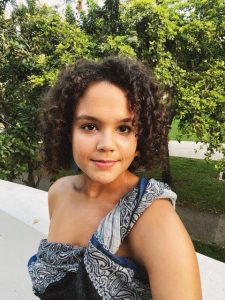
Marla Valeria Santos-Crespo
University of Puerto Rico
When I started university, I planned to become a medical doctor. But then, my biology professor invited me into the El Yunque rainforest. There, I fell in love with ecology.
My experience of mentoring students has made me realise that I want to be a teacher. Initially, I wanted a government job that involved collecting data to give to communities to help them protect and maintain their rivers. But I really enjoy working with students and teaching them about ecology. I want to help people learn about rivers and ecosystems, and I hope to inspire the next generation of ecologists.
We all depend on our environment, so we must all do our part to preserve it. We all have a responsibility to care for our planet. Whether or not you dream of a career in ecology, it is important that you take an interest in the environment and help to protect it. In Puerto Rico, we have been blessed with many natural resources, and I am passionate about protecting the biodiversity of our island.
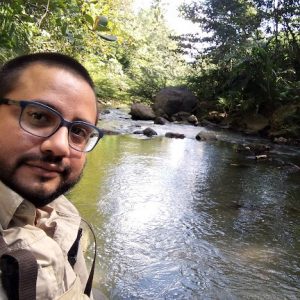
Professor Jesús Gómez
University of Puerto Rico, Mayaguez
Watching nature documentaries sparked my curiosity about biodiversity. While at high school in San Juan, I volunteered with the Luquillo Long Term Ecological Research Program, which ignited my love of ecology. I enjoy mentoring young students who come to Luquillo. Young people show great curiosity about the forest, and they come up with thought-provoking questions and ideas about ecology.
My current research is investigating how to control the coffee berry borer. This beetle attacks coffee plants, reducing the quality and quantity of the coffee harvest. It is usually controlled by pesticides, but I am exploring biological control methods that are better for the environment.
We don’t exist alone in a bubble – we’re all part of a global ecosystem. Societies rely on natural systems and resources, and it is important to understand that what happens to the natural environment in one place can impact humans in another.
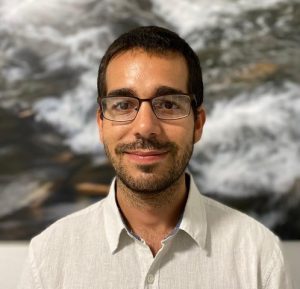
Omar Gutiérrez del Arroyo Santiago
International Institute of Tropical Forestry
Growing up, I spent a lot of time outdoors in the forests of Puerto Rico. My dad is a biologist, and my mom is an artist who loves being in nature; my family inspired my love of ecology. El Yunque National Forest is an oasis of protected land in a world of urban development and climate change. We must value and protect the huge ecological diversity we have in Puerto Rico.
While in high school and university, I volunteered in various forest ecosystems in Puerto Rico and the US. These experiences opened my mind to the range of ecology research being conducted, introduced me to new people and allowed me to explore new places.
I enjoy inspiring students to consider a career in ecology. My career is a combination of my interests in trees, soils and climate change. If you like spending time in nature, then a career in ecology will allow you to combine this with your other interests, while contributing valuable information that will help the environment and wider society.

Dr Stefani Cruz Rosa
Ana G. Méndez University
I have a very interdisciplinary background because I like many areas of science. My initial interest was in molecular biology. For my PhD, I studied the effects of pollutants on biological systems. Now, I teach classes about nutrition and health.
The health of an ecosystem is closely linked to the health of humans. If the ecosystem is unhealthy, so are we. It is vital to conserve ecosystems so that we can all enjoy good health. It is also important to understand that we are part of the ecosystem, not separate from it.
I enjoy the educational aspect of ecology, and I like translating my scientific research to non-scientific audiences. If scientists only share their results with other academics, then they won’t have an impact on society. Instead, we must involve local communities in our work so that everyone can contribute to and learn from scientific research.

Alyssa Brown
Columbia University
I’ve always been interested in the natural environment. I studied landscaping and land management at university, which allowed me to apply my interests in a practical way. For one project, I investigated water-efficient alternatives to traditional grass lawns in Utah, which suffers from long-term droughts.
When I first visited Puerto Rico, I immediately fell in love with the people. It was the first time I’d been in a tropical environment, and I was curious about the new plants and ecosystems I saw. This experience inspired me to focus on ecology research.
When I started my master’s degree in ecology, I worried that my science background was much weaker than everyone else’s. They had all taken so many more science classes than me, while I had studied business and design during my land management degree. However, I soon realised this was a strength, not a disadvantage. I had been taught to think differently and I could approach questions in different ways.
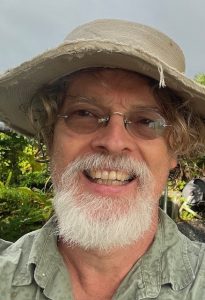
Professor Alex Sloan
University of Puerto Rico, Bayamón
I had a wonderful biology teacher in high school. Once, he brought in owl pellets for us to dissect in class. Owls can’t digest the fur and bones of the animals they eat, so they regurgitate them as pellets. By dissecting these, we discovered what the owl had eaten.
Growing up, I had vision issues, but these disappeared when I used a microscope. It was so empowering to remove my glasses, adjust the microscope lenses and see tiny things in incredible detail. This freedom caused me to fall in love with biology.
I study the dry forest of southwest Puerto Rico, which is under threat from invasive species and fire. Despite being a dry forest, most native plants are not fire-adapted as naturally started fires are extremely rare. However, many introduced plants, especially invasive grasses, are fire-adapted and spread rapidly following fires started by humans.
Do you have a question for the team?
Write it in the comments box below and the team will get back to you. (Remember, researchers are very busy people, so you may have to wait a few days.)
Ecologists use geographic information systems (GIS) to study visualise data about ecosystems. Learn how GIS can bring data to life:

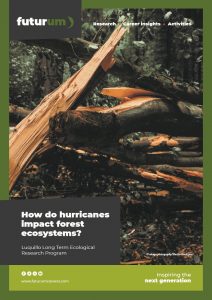
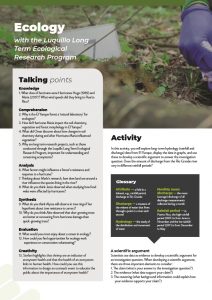
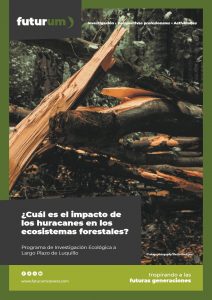


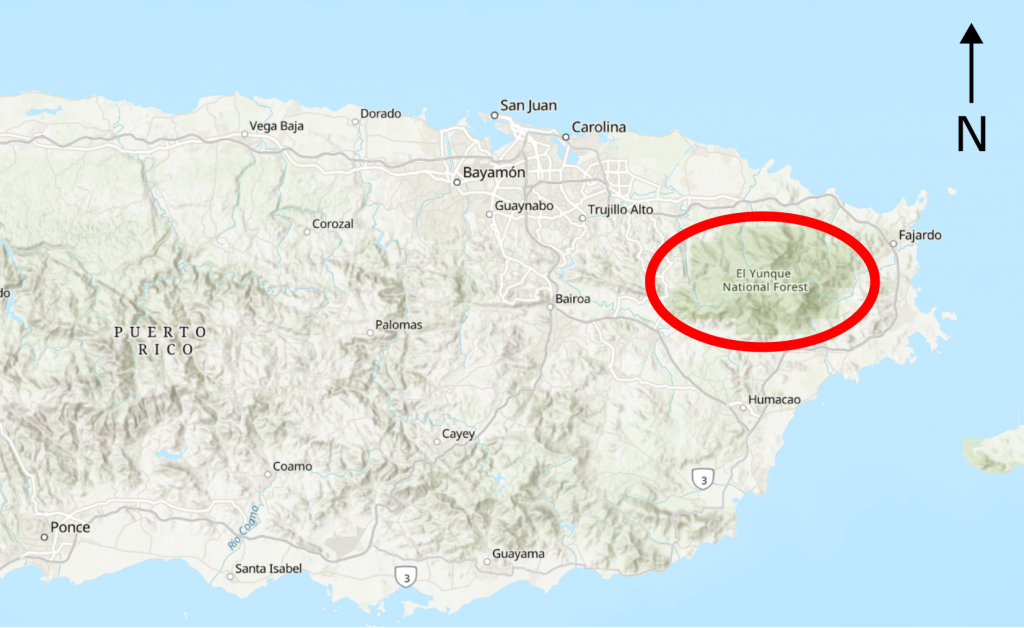

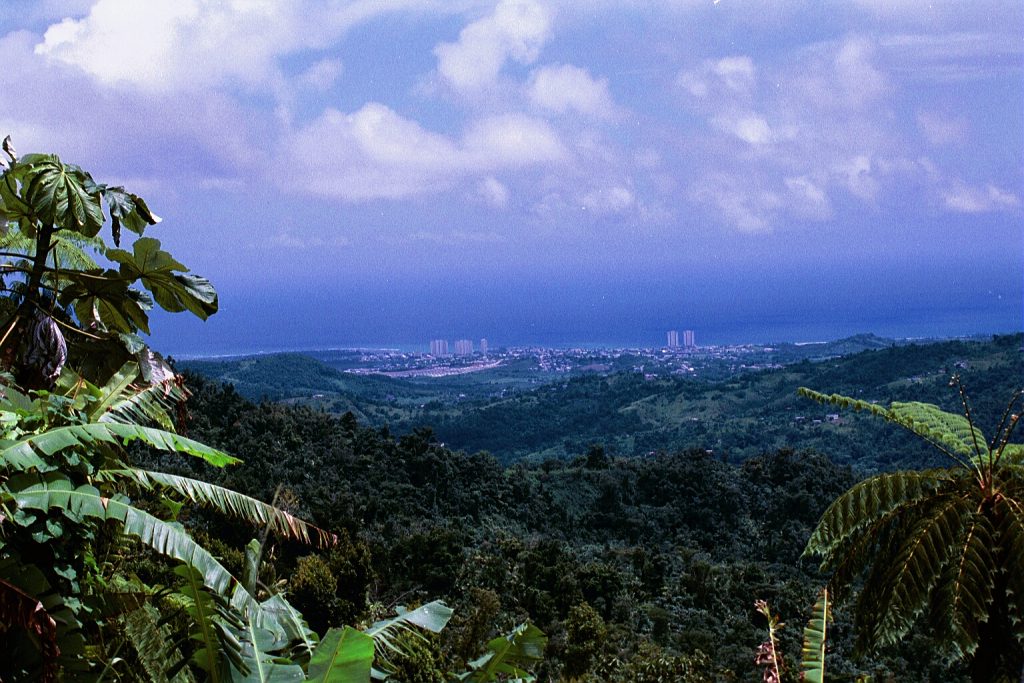
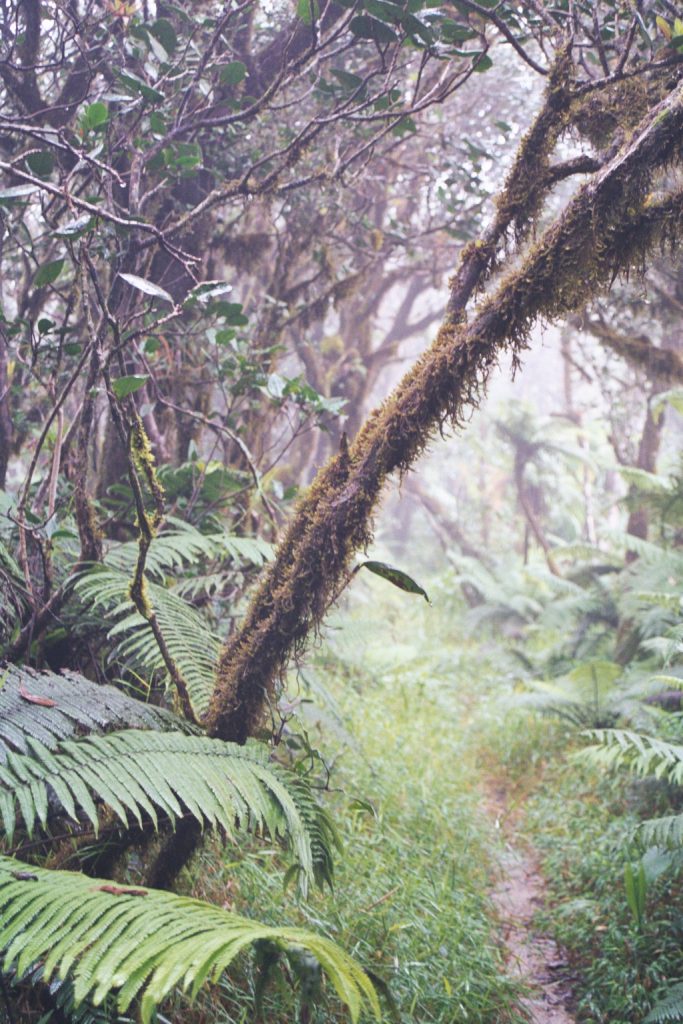
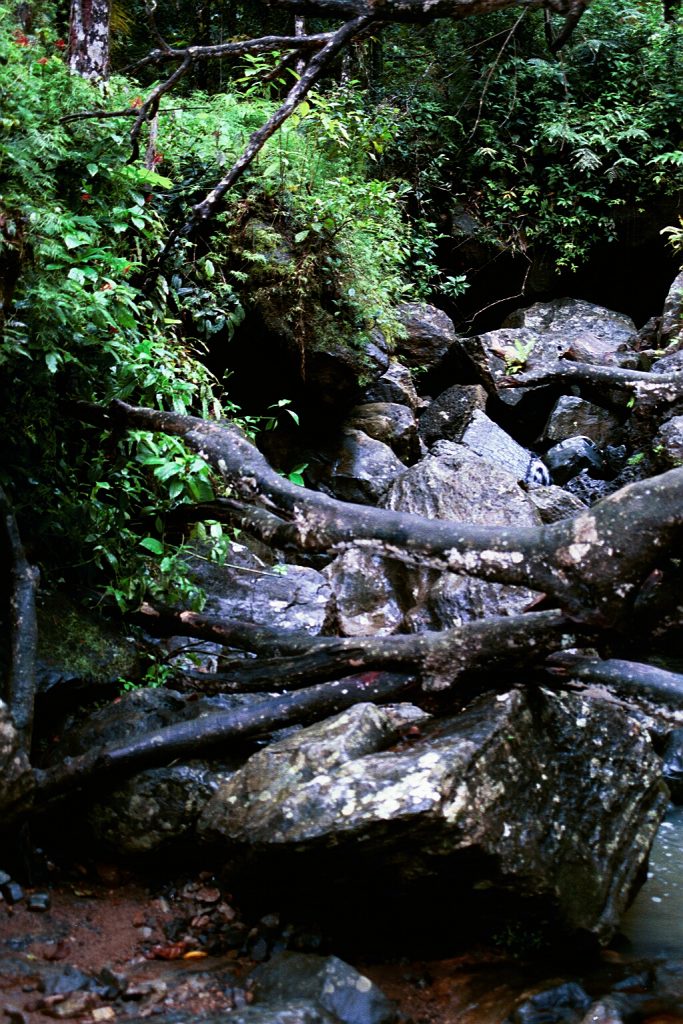






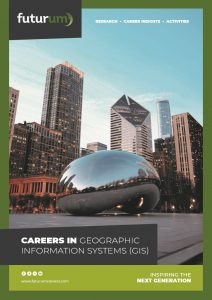
0 Comments